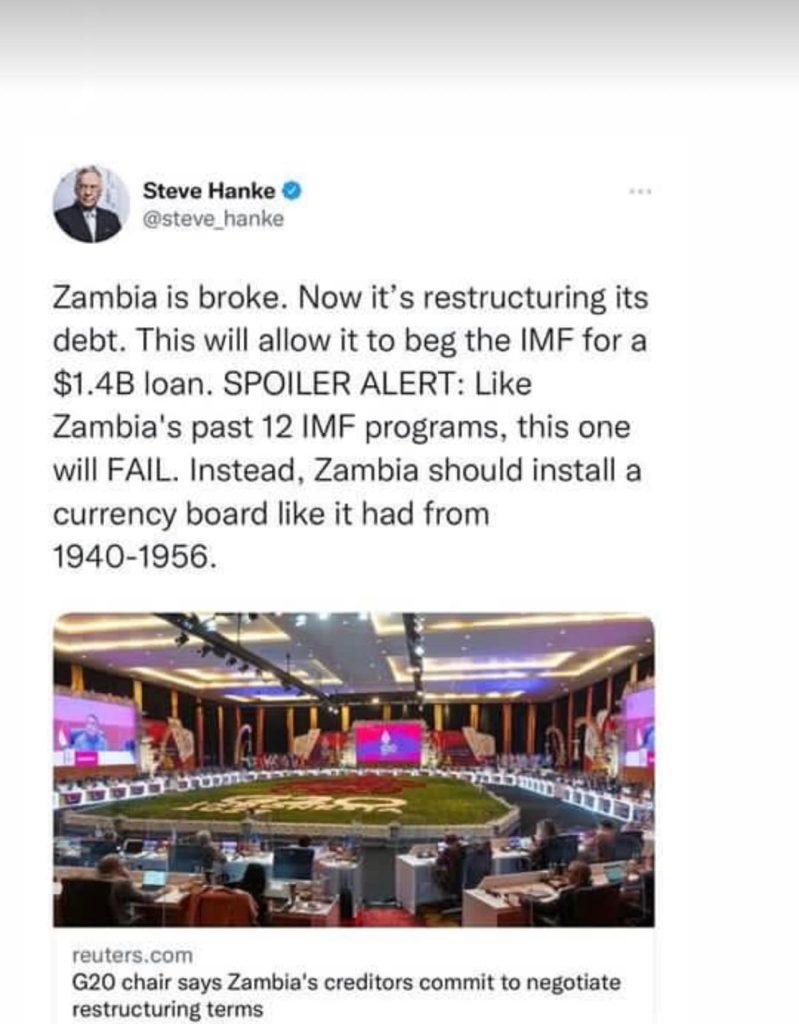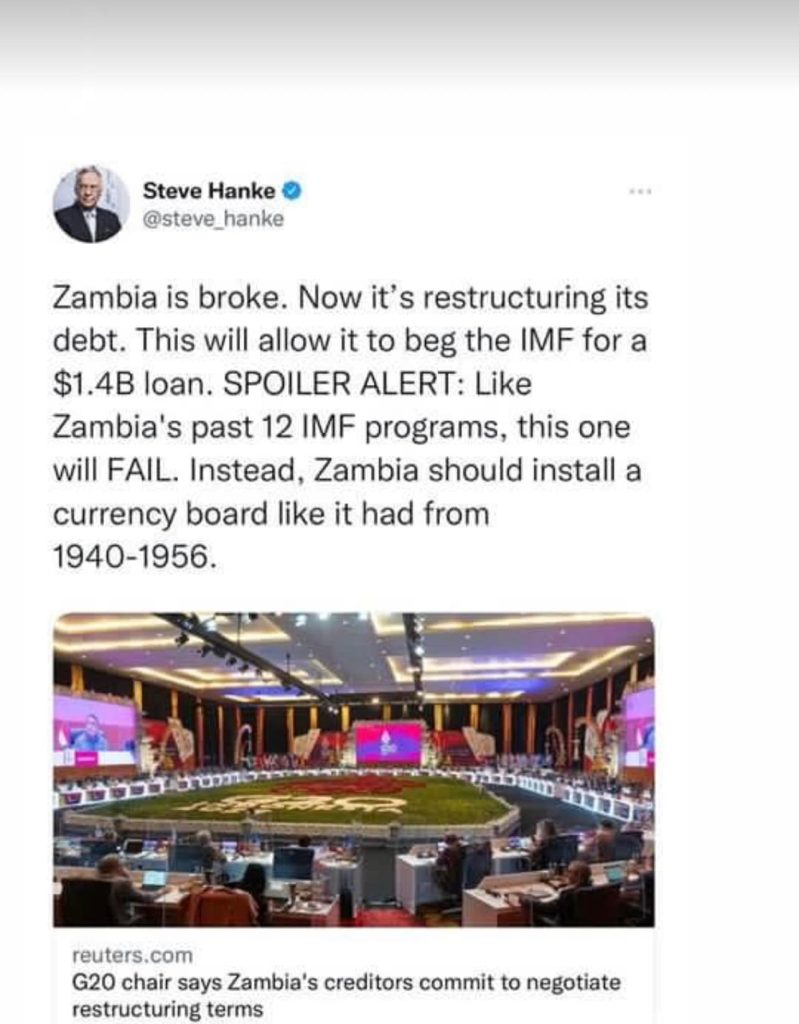
BEFORE THE CENTRAL BANK
Source: BOZ
A semblance of central banking started in Zambia through the establishment in 1938 of the Salisbury (Harare) based Southern Rhodesia Currency Board. Its jurisdiction extended to Northern Rhodesia and Nyasaland because of a monetary agreement that existed between Southern Rhodesia and these territories.
In 1954, the Southern Rhodesia Currency Board was renamed the Currency Board of Rhodesia and Nyasaland when its ownership changed from the Southern Rhodesia government to the Federal government of Rhodesia and Nyasaland. Currency boards are not central banks and they do not offer banking services. Their sole function, in contrast to the multiple functions of central banks, is to issue currency.
In the case of the Central African Currency Board, and its predecessor they issued the Central African pounds which were 100 percent backed by pound sterling reserves in London. In other words, if the territories’ foreign exchange reserves rose, the Board increased its issue of local currency. If they declined, the local currency issued also had to be reduced. With time the Currency Boards existence was hotly debated with some people saying that it needed to be replaced by a central bank.
At the time, one of the popular views held by economists was that monetary policy could play a direct role in promoting economic growth primarily through credit expansion. The strict rules on monetary creation under the currency board, which made it conditional on developments in the balance of payments, did not accommodate discretionary credit expansion. In general, it was also considered more preferable to have a central bank which could conduct monetary policy and counter unfavourable cyclical developments.
Another major criticism that was made on the currency board was that the system for issuing currency under it imposed a heavy opportunity cost on the economy. Since the domestic currency on issue required 100 percent pound sterling cover, the utilisation of foreign reserves to import capital for development was restricted. In one important aspect, there is an important lesson to be learnt from the currency board arrangement. Firstly, it was cheap to administer.
This was because it was a tiny organisation. Secondly and perhaps more important, monetary restraint was much easier to establish under the currency board arrangement because government borrowing, the usual source of monetary expansion in most countries, was not allowed. Maintaining low inflation rates is therefore much simpler compared to modern central banking which permits the government to print money for spending. Many central banks in the world, including the Bank of Zambia, which were forced to rapidly expand credit to their governments during the 1970s and the 1980s discovered they could do little to stop inflation. That is why in the recent years many governments are moving away from borrowing from their central banks.
The Establishment Of Central Bank
As the view grew stronger that a currency board was inappropriate, the Bank of Rhodesia and Nyasaland was established in March, 1956. It was equipped with the full powers of a conventional central Bank such as conducting monetary policy, banker to government and commercial banks, manager of foreign exchange reserves and so on. The bank was also empowered to lend to the territorial and the Federal governments up to a limit based on their expected revenues in that fiscal year. The Bank of Zambia was established to take over from the Bank of Northern Rhodesia on the 7th of August,1964 although its Act was only passed in June, 1965. The Bank of Northern Rhodesia was itself constituted from the Lusaka branch (established in September, 1961) of the Bank of Rhodesia and Nyasaland after it broke up together with the Federation of Rhodesia and Nyasaland on the 31st of December, 1963. The Bank started operations with about 100 staff organised around only two departments, namely the Chief Cashier’s or General Manager’s department and the Secretary’s department. The former was responsible to the Governor for monetary policy implementation, currency issue, banking, government securities, exchange control and foreign exchange management.
The Secretary was responsible for personnel, administration, internal auditing and the Board. With time, the number of departments at the Bank started to increase. One of the earliest to be established was the Research Department in 1967. The Operations Department was created in 1976, and later, especially in the 1980s, the pace accelerated when other departments such as Personnel and Administration (1977) Exchange Control. Import and Export Control, Estate and Properties (all in 1981) were created. They were followed in 1982 by Banking and Currency, Small Scale Industries, Inspection and in 1984 by National Debt, Transport, and Government Securities.
The increase in the number of departments at the Bank partly reflected the increased demand on the functions which it had to perform, most of which centred around administering government imposed regulations such as exchange controls and import and export controls. In turn there was higher demand by the Bank on support services for these core activities. In addition, however, it is also true that the Bank, like many other organisations both inside and outside Zambia then, did not make hard distinctions between core and peripheral responsibilities and, hence, utilised resources accordingly.
To give a concrete example, it was an accepted practice in Zambia that employers should find accommodation for their employees and in some cases, even furnish that accommodation. Institutions therefore acquired substantial property which required manpower and organisation to manage. In some cases there were economic arguments, which were considered sound then, which led to organisational expansion.
In the foreword to Ten Years of Banking in Zambia, a Bank of Zambia publication, former President Kenneth Kaunda wrote as follows: “Our highest priority now is the rapid development of the rural areas where the masses of our people live. In this connection, I am confident that the Bank of Zambia would not restrict itself to the orthodox central banking concept of monetary stability only. I would like to see the banking system as a whole take the challenge and devise effective tools in order to facilitate the dawn of a new era of prosperity for the rural areas in particular and the other sectors of the country in general …,” As already indicated above, this was an acceptable position at the time in the developing world and one of its strongest proponents among practitioners was the Reserve Bank of India.
Applied to Zambia, it included the establishment of a department for Small Scale Industries and, later, a credit guarantee scheme. The expansion of the functions of the Bank saw a rise in the number of staff from 400 by 1975, to 1 226 in 1988 and to 1 400 in 1994. The Bank premises therefore had to be extended to accommodate the numbers.
The new building (currently corporate head office) opened in 1975 while the Regional office in Ndola opened in 1979. Annex
buildings were subsequently added to Lusaka and Ndola. This expansion resulting from this extension of functions was unfortunately not underpinned by a strong organisational structure. Instead, and in the words of a consultant in 1989. “The Structure of the Bank has evolved over time more in response to staffing factors than the real needs of the Bank”.
One major cause for this has been the extreme rapid turnover of Governors. Since 1964, there have been ten appointments to the post (excluding the current Governor) over a period of 28 years making an average tenure of 2.8 years for each. With instability at the top, continuity and strategic planning for the future were bound to suffer.
The Changing Roles Of Central Bank
The Bank of Zambia Act of 1965, and its subsequent amendments charge the institution with the usual central bank responsibilities such as being banker to government, issuer of currency, manager of foreign exchange reserves, controller of commercial banks’ liquidity and with responsibilities for the formulation and implementation of monetary policy. Although maintaining price stability is referred to in the Act as one of the Bank’s objectives, it was not considered with any particular emphasis in practice. This was not unique to Zambia.
Many other central banks followed the received wisdom of the times regarding the possibility of a trade off between inflation and employment – the Phillips Curve idea which stipulates that higher levels of employment could be attained if higher inflation rate could be tolerated. The thinking at the Bank of Zambia – and at many other central banks – was that putting special emphasis on the central bank’s objective of maintaining price stability was focusing the function of a central bank much too narrowly. Interpreting its position correctly the Bank of Zambia acquired an equity stake in the Development Bank of Zambia and in the Zambia National Commercial Bank.
At one time, thought was even given to the possibility of establishing and running a commercial farm. Meanwhile in the major central banks of the world, the idea that the main role of central banks should be the maintenance of price stability without which a stable macroeconomic environment was not possible, was gaining ground. It was also increasingly being felt that there was little else that a central bank can do to promote economic prosperity and attempting to do so through easy money just led to higher inflation. As a result of this realisation, Central Banks started to re-orientate their activities accordingly.
This new view on the appropriate role for central banks is only now beginning to be accepted. In 1991, the Movement for Multiparty Democracy (MMD) came to power, replacing the United National Independence Party (UNIP) which had ruled for 27 years. The new government’s priorities was the restoration of economic future growth and employment to the Zambian economy.
Liberalising the economy and thereby allowing market forces a greater role in the allocation of resources was to be the main means of achieving this. Price controls were abolished, as were subsidies on all consumer items. Macroeconomic management in Zambia has not been the same since. Although the ultimate economic objective has remained the same, namely growth and employment, it is now generally accepted that investment and subsequent growth is unlikely to take place if the economy remains characterised by macroeconomic instability such as high inflation, shortage of foreign exchange, scarcities of commodities and so on. Consequently, from 1992 the emphasis has been on creating a stable macroeconomic environment as a prelude to sustainable economic growth.
The government’s focus on price stability as a key contribution to future economic growth prospects has paused a new but welcome challenge for the Bank. Hence, for example, although it reluctantly got involved in things like providing credit to Parastatal organisations, it has begun to re-orient its activities towards meeting the core objective of maintaining price stability and ensuring a sound financial system.

